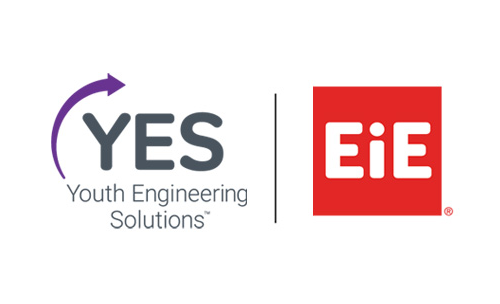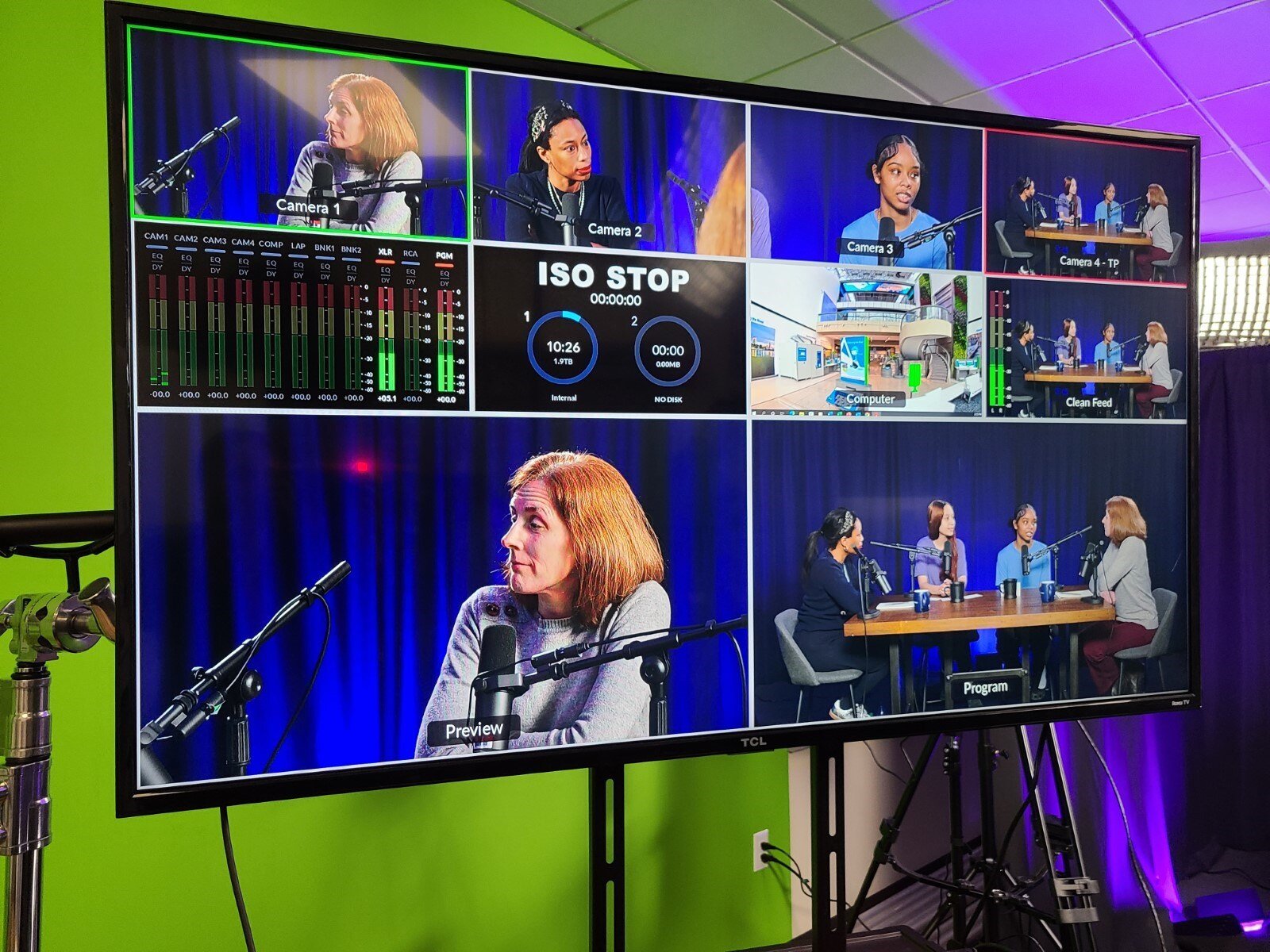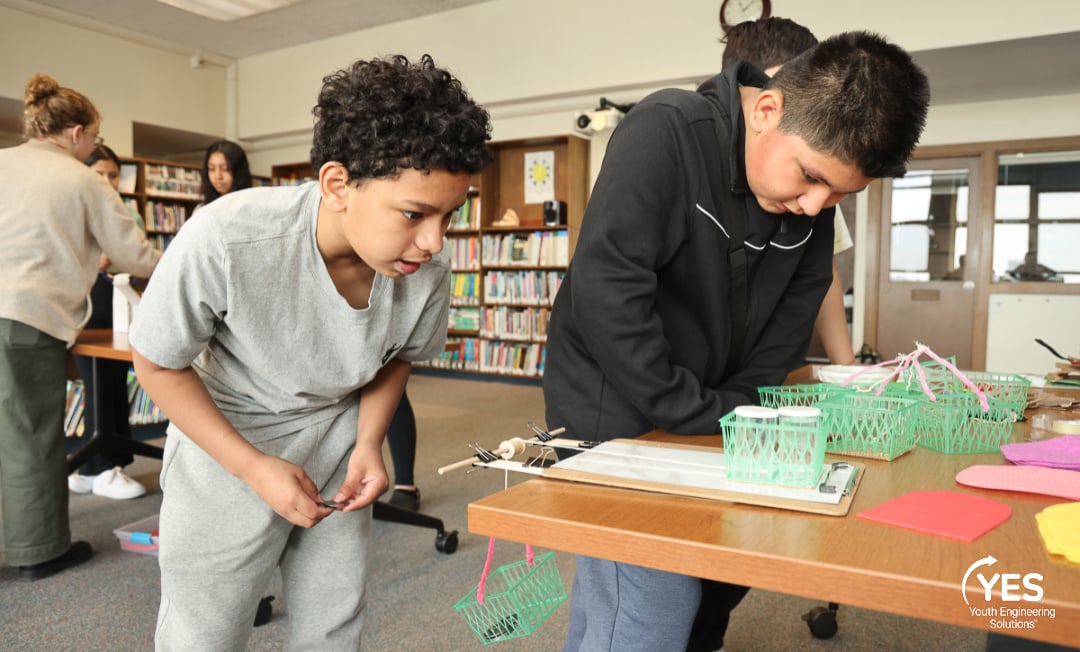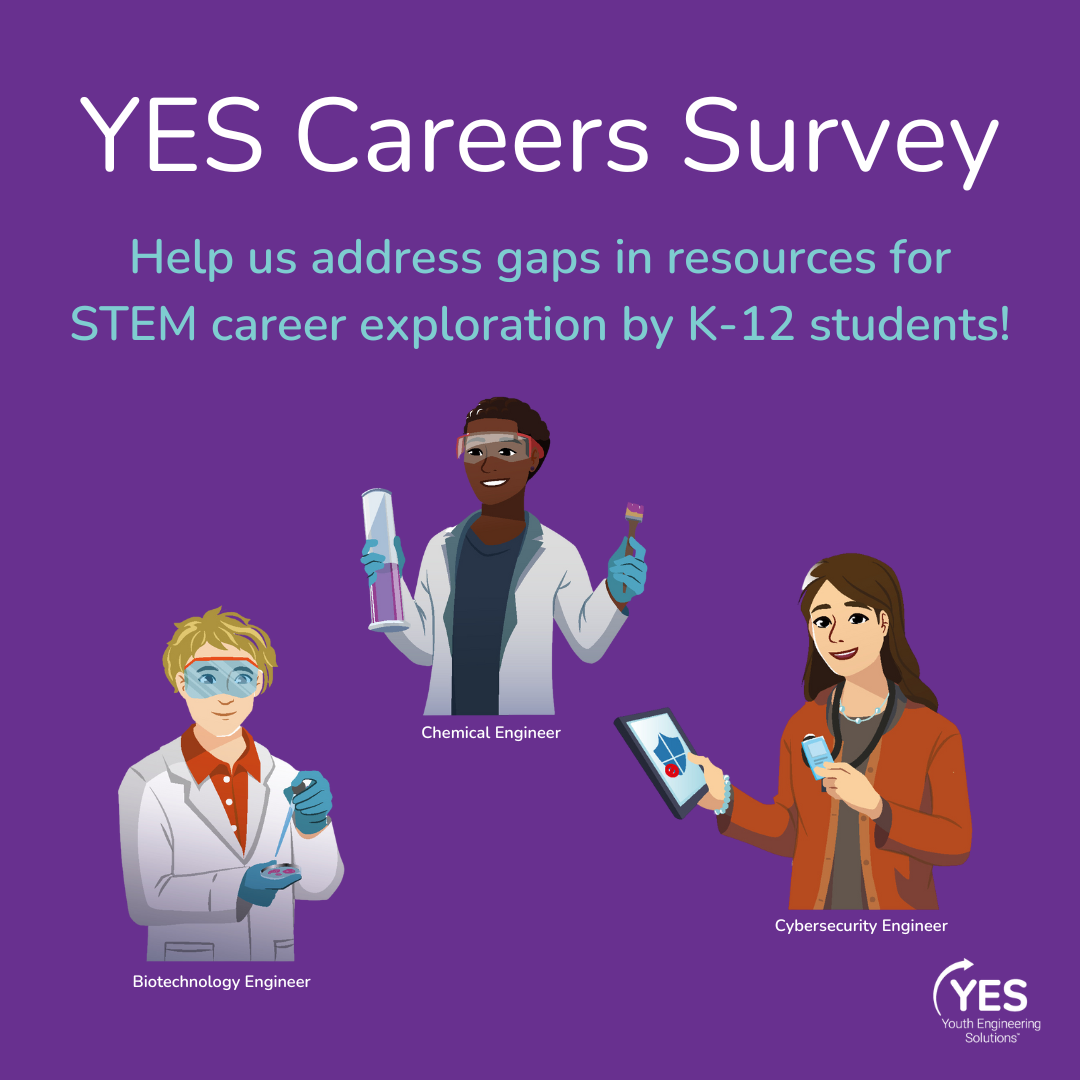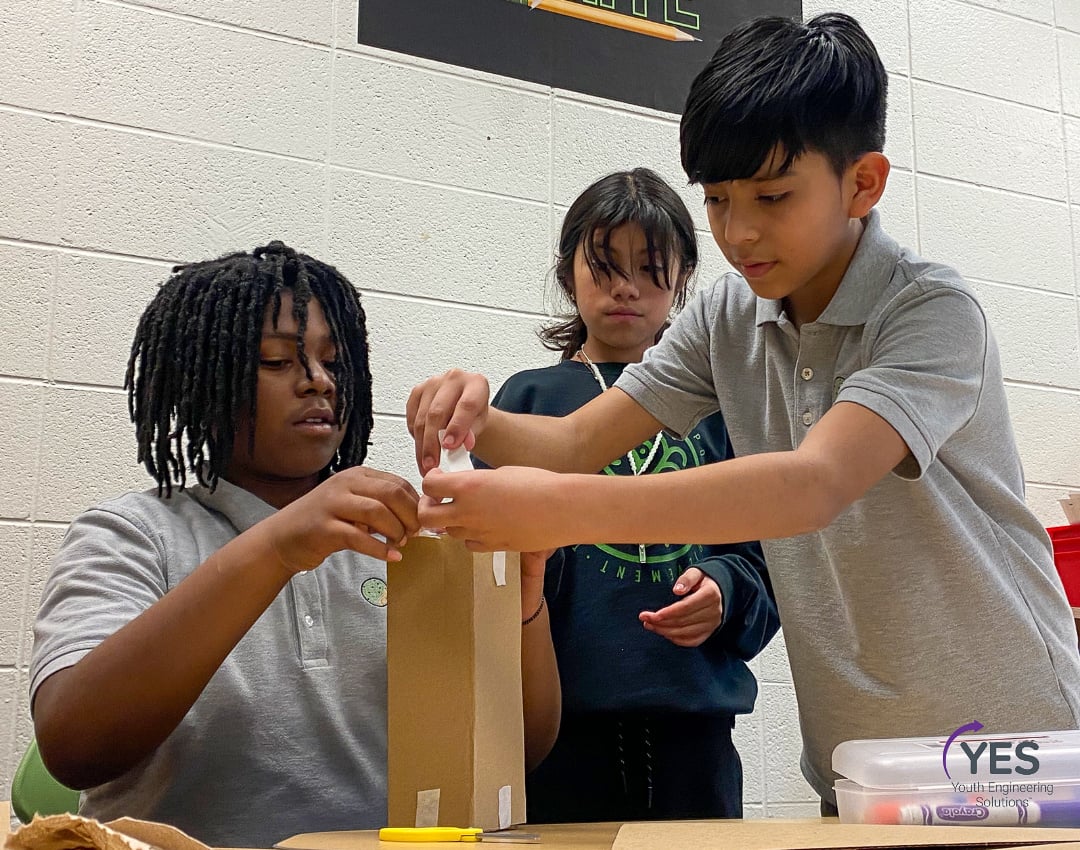Combined physical and digital experiences enhance student learning and collaboration.

Students working with circuits from the Engineering Safety Vests unit. Credit: C. San Antonio-Tunis.
If you’ve ever done a circuit activity with your class, you know how engaging students find them and how empowering the experience can be. You also know to expect some troubleshooting. Connections can be finicky, which can lead to frustration. Students can draw the correct circuit diagram and they know, theoretically, that they’ve created a path for electricity to flow, but that light bulb just won’t light up! Thankfully, the engagement factor is usually enough to encourage students to persist, but could there be a way for them to check their conceptual understanding so that they know they are on the right track even if that pesky bulb isn’t lit?
Bringing the Digital to Life with MindLabs
The MindLabs Energy and Circuits kit allows students to create circuits in augmented reality (AR) to do just this. Using the MindLabs STEM app, students can scan battery, switch, and light bulb cards with their tablet cameras to visualize them in 3D, add them to their design, and then connect them by simply drawing in wires with their fingers. If they’ve created a successful circuit, the light bulb will light up! No need to check to see if their alligator clip successfully made contact with that tiny LED wire! And…students can have as many circuit components as they want. Unlike hands-on activities with limited (expensive) materials, there’s no need to constrain the number of components students can use. With embedded notebook features in the app, teams can document their AR designs and troubleshooting efforts so teachers can review their work synchronously or asynchronously.

Cards students scan with their device cameras to see in 3D. Credit: Explore Interactive/MindLabs.

The MindLabs STEM app contains a notebook feature. Credit: Explore Interactive/MindLabs.
Research shows that hands-on experiences combined with computer simulations can promote student conceptual understanding and lead to greater learning gains compared to each modality individually1. Through a collaboration between the Museum of Science, Boston, and MindLabs, we deployed the Youth Engineering Solutions (YES) Engineering Safety Vests hands-on unit alongside the MindLabs Energy and Circuits AR kit in three fourth-grade classrooms at Yorktown Elementary School in Indiana.

The Engineering Safety Vests Teacher Guide, along with all YES curricula guides, is available to download for free.
In the Engineering Safety Vests unit, students apply their knowledge of circuits, communication systems, and the Engineering Design Process to create a vest that will increase pedestrian, cyclist, and skateboarder safety at a busy intersection. The MindLabs Energy and Circuits kit was implemented at key phases of the Engineering Design Process to support student understanding of circuits concepts: during the Ask phase as students learned about the components of a circuit and considered how energy flows to power a light bulb, and during the Plan phase where students tested and augmented their written plans before physically constructing safety vest designs.
 The YES Engineering Design Process.
The YES Engineering Design Process.
Connecting Digital to Physical
Students in every classroom were able to successfully connect the idea of creating a circuit in AR to creating a circuit with the physical materials and vice versa. Some students felt it was easier for them to construct a physical circuit because they had experience creating and troubleshooting circuits in AR. As students worked in AR, they expressed how they created open and closed circuits with a switch. Students also verbalized how they had to make sure that their circuit was in the shape of a circle to get the light bulb to light up, which they referenced again while using the physical materials.

A team tests the plan for their safety vest using AR and overlay the image on their vest prototype base. Credit: Explore Interactive/MindLabs.
During the Plan phase, students were encouraged to consider why engineers might test ideas on a computer before constructing them physically. Students mentioned that engineers needed to construct items on a computer before they constructed them in real life in order to save money and assure a good probability of the item working appropriately before the money was spent on the physical creation. Teachers and students discovered they could place the physical vest under their device cameras to overlay AR circuits components. Seeing where they would be placing the wires, LEDs, batteries, and switches on the vest helped students modify their written plans and understand that wires were going to have to go over their shoulders or around their sides.

A team constructs their physical safety vest. Credit: Explore Interactive/MindLabs.
Bonus Features in the MindLabs STEM App
The MindLabs app also has a number of other useful features for teachers to assess students’ mindsets and to support team collaboration. Students have the ability to log their personal mindsets and collaborative feedback on the app as they work with their team. For example, a student may log “ready to learn” or “frustrated” at one point during a lesson, and later indicate they are “excited” or “tired.” Students can also share feedback on the effort, communication, or teamwork of their group members. Positive feedback is viewable to both educators and by teammates to reinforce behaviors, while negative feedback is sent only to educators. These tools help educators understand classroom dynamics in real-time and give them visibility into quieter students’ mindsets, allowing them to focus their attention on teams who need the most support. During this pilot, 75% of student feedback to team members was positive.
This material is based upon work supported by the National Science Foundation under Grant #1913637 and #2330302 and National Institutes of Health Grant #R43GM134813.
1Jaakkola, T., & Nurmi, S. (2008). Fostering elementary school students’ understanding of simple electricity by combining simulation and laboratory activities. Journal of Computer Assisted Learning, 24(4), 271-283.
